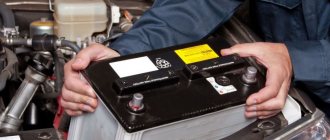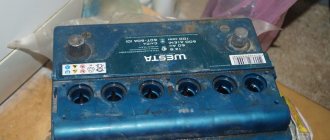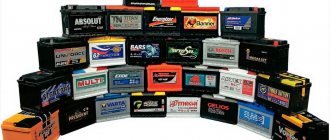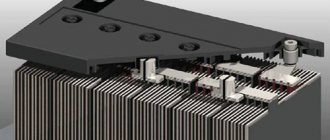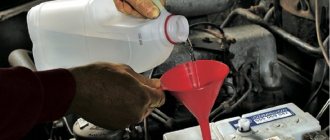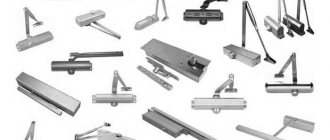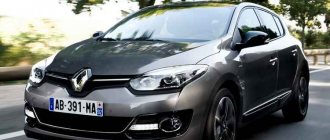Battery markings
All car batteries on the Koleso online store website have a uniform naming format that contains information about their main parameters. For example, a battery with a capacity of 70Ah, straight polarity, a starting current of 600A, a length of 232 mm, a width of 173 mm and a height of 225 mm is called 70Ah L+ 600A 232x173x225
.
To make the right choice when buying a new battery, you should take into account not only their main parameters, but also those indicated in the labeling. In order to understand what a particular number or letter on a car battery label means, first of all, you need to determine which standard it belongs to.
Depending on the place of manufacture of the battery, there are 4 standards: Russian (according to GOST), Asian (JIS), American (SAE) and European (German DIN or international ETN).
All standards include in the labeling information about:
- nominal capacity;
- manufacturing company;
- rated voltage;
- cold scroll current;
- production date;
- polarity;
- battery weight;
- electrolyte level.
Russian standard
According to Russian GOST
The battery marking, for example, looks like this:
6ST-55AZ
, where:
6
is the number of cans in the battery;
ST
- purpose of the battery (starter battery);
55
- nominal capacity in Ampere-hours;
AZ
- battery version (A - general cover, B - filled with electrolyte and charged, P - envelope separator made of polyethylene, M - minplast separator made of polyvinyl chloride, E - ebonite monoblock, T - thermoplastic plastic monoblock).
In regulatory documents for specific types of batteries, it is allowed (if necessary) to indicate additional designations.
Asian standard
According to Asian
JIS
standard , the marking, for example, looks like:
75B24L
, where:
75
is a kind of capacitance coefficient, indicating the inrush current level and capacitance, but this is not capacitance in its pure form;
B
- battery version: type of terminals, dimensions, etc.
Latin letters from A to H are used; 24
— battery length in centimeters;
L
—location of battery terminals: L—negative terminal on the left, R—negative terminal on the right.
American standard
According to American
SAE
standard, the battery has a similar marking:
A34650,
where:
A
is the type of battery (car battery);
34
- coefficient of size and polarity (34 - 260x173x205 mm, straight polarity)
650
- cold cranking current in amperes (650A).
European standard
According to European
ETN
standards, the battery marking looks like:
560 065 043,
where:
5
- 12V battery capacity group (5 - capacity from 1 to 99 Ah);
60
— battery capacity (60Ah);
065
— battery version;
043
- cold cranking current in amperes (430A).
A number of foreign battery manufacturers mark their batteries in a specific way, indicating in the marking not the capacity, but the value of the cold start current, which, according to the catalog, can be compared with the value of the nominal capacity. An additional code, unique to each manufacturer, allows you to find out the place and date of production of the battery.
Date of release of batteries of various brands
Each battery is marked with the date and place of manufacture. Most often they are extruded on the body. Unfortunately, there is currently no uniform standard for labeling this information, so each manufacturer uses its own format. So, for example, the release date of A-mega batteries looks like 0491 62-0M7 126/14
, where 14 is the year (2014) and 126 is the day since the beginning of the year (May 6).
Varta batteries are marked С0С453032
, in which C is the location of the plant (Czech Republic), 0 is the conveyor number, C is the order type, 453 is the release date (4 - 2014, 53 - May).
On Feon batteries, information is placed in the format 2436
, where 4 is 2014, and 43 is the week number.
High-capacity batteries for smartphones - truth or myth?
Low battery life is the scourge of most modern smartphones: we are glad that the gadget survives until the evening, and we can only dream of working for a couple of days.
Of course, there are plenty of ways to solve the problem: there are various power banks, there are smartphones with 5000, 10000 and even 18000 mAh batteries, as well as smartphones that can charge 50% of their capacity in 20 minutes of charging at lunch, allowing them to survive until the evening. Alas, it’s difficult to call these solutions to the problem convenient: the power bank and the cable for it take up space and need to be carried with you all the time, and using a smartphone while charging is not very convenient. Smartphones with huge batteries are often heavy bricks, often thicker than many laptops - they are also inconvenient to use. Well, for fast charging, you again need a special charging unit that you will have to carry with you. And this raises a completely logical question - is there a way to extend the battery life of a smartphone without resorting to such extremes? The answer is yes, and these are high-capacity batteries, and below in the form of questions and answers I will try to tell you everything about them.
High-capacity batteries - an old story from the Chinese, in fact it is an original battery with a different label
Indeed, perhaps someone else remembers the scam from the Chinese, when they offered batteries for old iPhones (4, 4s, 5) with a capacity of ~2500 mAh, that is, almost twice as much as what is inside:
Alas, in practice, under the beautiful gold sticker there was an ordinary battery, at best a used original one, at worst a Chinese copy. Obviously, there was no talk of doubling the battery life, and the positive reviews were due to the fact that such a battery often still had a higher capacity than the one worn out in the smartphone, which extended the battery life.
Therefore, it is not surprising that many doubt the existence of reinforced batteries, but I will dispel doubts - they really do exist:
The capacity of the original battery for the iPhone 6s Plus is about 2750 mAh, and the enhanced one is already about 3200, that is, an increase in capacity by more than 15% is quite a nice bonus. On the right is a screenshot from OnePlus 3: the original battery for it has a capacity of 3000 mAh, and the enhanced one has about 3800, which gives a 25% increase in capacity!
Which smartphones have high-capacity batteries?
The more popular the smartphone, the higher the chance that it will have such a battery: for example, they are available for most iPhones, starting with 5s (manufacturer Nohon or Craftmann - the first is on Ali and offers higher capacity), some Samsung, Xiaomi (usually remakes from other batteries), as well as OnePlus. For your smartphone, it is better to check in the topic related to battery life on the 4pda forum or similar.
How much capacity increase can you expect?
Usually from 10 to 25%, which is quite significant. Remember, if you see on the same Ali a battery with a capacity 2-3 times higher than the original, and with the same dimensions, this is definitely a fake, because you can’t fool physics.
What problems might you encounter during installation?
Obviously, high-capacity batteries are larger in size - usually in thickness. In the case of the iPhone there will be no problems; Apple has left a significant gap (for example, the original battery is below the level of the board). With other smartphones, depending on your luck: for example, in the case of OnePlus 3, the manufacturer left a minimum of space for the battery, so the reinforced solution, which is 1 mm thicker, makes the screen stick out a little:
In the case of older Samsung ones, you have to change the removable back cover.
What problems can you encounter when using it?
The most common problem is uneven discharge, which is quite obvious given that the firmware may contain the capacity of the original battery. In the case of the iPhone, this usually looks like a long run time on 1% charge - up to 20-30 minutes. Also, in the iPhone settings you will not be able to see the battery wear - instead there will be a dash, and the system will recommend replacing it. In this case, the peak performance mode will be activated, that is, you will not lose in performance:
What about the quality of these batteries?
It is very different: if Nohon is a fairly large manufacturer responsible for quality, then the same “cans” for OnePlus are made by an unknown manufacturer, and it is difficult to assess its quality. Therefore, we carry out all actions at our own peril and risk - it is possible that at one point such a battery will swell, and certainly no one guarantees that after 200 cycles it will not lose half of its capacity.
Why don't smartphone manufacturers immediately install larger batteries?
There are two points here: firstly, we all remember that the problems with the Samsung Galaxy Note 7 were that the battery did not pass certification and did not fit in the size of the place that was allocated to it in the case. Therefore, manufacturers would rather reduce batteries than want to repeat the situation as with this smartphone. Secondly, don’t forget about planned obsolescence: in a year and a half to two years the battery will lose 20% of its capacity, and if it was already enough when you bought it, then with 80% of its useful capacity you will definitely go to change it - and this will bring money to the manufacturer. Having a battery with a capacity of 20% more, in two years you will only return to the original one, and you will hardly want to change the battery.
So is it worth installing such batteries in the end?
In the case of the iPhone, it’s clear: there will be no structural problems during its installation, everything is exactly the same as if you replaced the old battery with a new original one. Plus, Nohon or Craftmann have been on the market for quite a long time and have established themselves as good battery manufacturers. As for other smartphones, it’s at your own peril and risk: did you find a battery from a well-known manufacturer, and it fits inside your gadget without any problems? It makes sense to put it there. Found an incomprehensible “noname” that doesn’t even fit a little? I would recommend waiting at least six months for user reviews to accumulate.
Marking the release date of batteries from different manufacturers
Decoding the marking is useful for every driver for the reason that each manufacturer uses its own standards when applying it. Usually this is a certain set of characters, alphabetic and numeric, into which the relevant information is “hardwired”. Without knowing the instructions for decoding it, it is impossible for an ignorant motorist to understand anything.
It is not recommended to purchase batteries without knowing the exact date of manufacture of the battery. A product that was stored in warehouses for a long time was definitely not recharged. This means that no one restored its capacity, and it gradually decreased. On the other hand, there is an important point in all this: the warranty period of the battery is calculated from the date of its sale to the buyer, and not from the date when it came off the production line.
The marking itself will also be useful to service center specialists who receive warranty claims for unsuitability and replacement of products. First, they are forced to check it, and then decide whether there are reasons to refuse the customer a warranty replacement of the battery. Therefore, the so-called individual product code is used to identify the date of its release.
What kind of batteries are installed in an electric bus?
Modern electric cars, including electric buses, use batteries with high energy capacity and high voltage. Lithium-ion, aluminum-ion, lithium-sulfur, metal-air and lithium-iron-phosphate batteries have technical characteristics sufficient for traction batteries. Electric buses from different manufacturers use drives not only with different compositions, but also with different dimensions, volumes and operational properties. Next, we will consider batteries of Russian and Foreign production.
What kind of batteries are in Russian electric buses?
Attention!
You can read about large Russian-made traction batteries on the RUSNANO Liotech website and at this link.
Table - Information about batteries in Russian electric buses
| Model and link to documentation | Battery type | Country of manufacture of battery | Battery life | Energy intensity | Maximum range | Charging type | Total passenger capacity |
| KAMAZ-6282 | lithium titanate (LTO) | ? | 20,000 cycles | 80 kW/hour | up to 70km | a) semi-pantograph b) on-board charger (night charging) | up to 85 |
| LiAZ-6274 | NMC (lithium manganese battery) | ? | 6 years | 129 kW/hour | up to 90km | pistol type | up to 75 |
| "Trolza" with dynamic charging | lithium battery | ? | ? | ? | up to 15km | dynamic from trolleybus networks | up to 80 |
| UTTZ 6241.01 “Citizen” | ? | ? | ? | ? | up to 30km | dynamic from trolleybus networks | up to 105 |
| Volgabus Cityrhythm 12 ELF | Lithium iron phosphate (LFP) battery | ? | ? | ? | up to 220km | night exercise | up to 90 |
What kind of batteries are used in electric buses abroad?
Attention!
You can read information about traction batteries for foreign-made electric buses at this link.
Table - Information about batteries in foreign electric buses
| Model and link to documentation | Battery type | Country of manufacture of battery | Battery life | Energy intensity | Maximum range | Charging type | Total passenger capacity |
| Belkommunmash 43303 (Belarus) | ? | ? | ? | ? | ? | dynamic from trolleybus networks | up to 170 |
| Linkker 13 (Finland) | lithium titanate (LTO) | ? | ? | ? | ? | pantograph | up to 77 |
| YUTONG (China) | ? | ? | ? | ? | ? | pantograph | up to 93 |
Domestic batteries
Manufacturers of domestic batteries are guided by the GOST 959-2002 standard, according to which the battery marking scheme is as follows:
- the first digit shows the number of cans in the battery
- The block of two letters immediately following the number indicates the purpose of the battery
- the number following indicates the battery capacity
- the last group of numbers and letters indicates the design of the battery (F- with a common cover, Z - filled and charged, P - envelope separator made of polyethylene, M-minplast separator made of polyvinyl chloride, E - ebonite monoblock, T = thermoplastic plastic monoblock)
Batteries made in Asia
Korean and Japanese factories have perhaps one of the most sophisticated battery markings. Let's look at the example of the main manufacturers:
- Solite. The alphanumeric combination looks like AB1C2. The first letter carries information about the manufacturer. The next one means the ten day of the month, and then comes the date and the month itself. You can ignore the remaining designations.
- Nordix, Startex, Rocket. The code is designated according to the AA1B23 principle, where the first letters refer to the marking of the enterprise. The next digit indicates the year, and the letter indicates the month. For example, B - this will be February. The last pair of numbers is the date itself.
- Puma Gold. They apply their personal standard type A1B23. To find out the data we are interested in, we look at the first digit - this is the year of manufacture. Then the month is encrypted in the form of a letter, followed by the letter of the enterprise and the date when the product left the assembly line.
- Japanese manufacturers FB and Panasonic make it easy to decipher the information of interest. It is enough to turn the product over and see sequentially placed numbers on the bottom - these are the month and year.
- The Totachi concern most often uses 6-character engraving. The 1АВС23 format will tell us that in this case the first digit indicates the year, the alphabetic symbol indicates the month of issue. Next comes the name of the enterprise, and the last 2 characters are the production number.
American markings
American markings follow SAE J537 standards and are as follows A34650, where:
- The first letter indicates the type of battery (A – battery)
- The next two digits indicate the size and polarity (34 – forward polarity 260x173x205 mm, 34R – reverse polarity 260x173, 2305)
Please note that if the battery is old and after charging its capacity leaves much to be desired, it is most likely time to replace the part. Using an old battery that cannot be charged can cause a short inside the battery. You can purchase original batteries at the manufacturer's price from IXORA.
| Manufacturer | Detail number | Part name |
| FURUKAWA | 55B24L | Low maintenance battery B/L 12V 45 [36] 242x130x200 Super Nova |
| FURUKAWA | 80D26L | Low maintenance battery A/L 12V 68 [55] 261x175x200 Super Nova |
| TITAN | 6CT551L | Battery TITAN 470 Standart 6ST-55.1 L |
| TITAN | 6CT600L | Battery TITAN 540 Standart 6ST-60.0 L |
| TITAN | 6CT601L | Battery TITAN 540 Standart 6ST-60.1 L |
| TITAN | 6CT621L | Battery TITAN 570 Standart 6ST-62.1 L |
| TITAN | 6CT751L | Battery TITAN 700 Standart 6ST-75.1 L |
| FURUKAWA | 40B19L | Low maintenance battery B/L 12V 37 [30] 190x130x200 Super Nova |
| FURUKAWA | 40B19R | Low maintenance battery B/R 12V 37 [30] 190x130x200 Super Nova |
| FURUKAWA | 105D31L | Serviceable battery A/L 12V 80 [64] 306x173x200 FH High Grade |
| FURUKAWA | 105D31R | Serviceable battery A/R 12V 80 [64] 306x173x200 FH High Grade |
| TITAN | 6CT561VL | Battery TITAN 530 Euro Silver 6CT-56.1 VL |
| TITAN | 6CT1351L | Battery TITAN 880 Standart 6ST-135.1 L |
| FURUKAWA | 46B24R | Low maintenance battery B/R 12V 45 [36] 242x130x200 Super Nova |
| TITAN | 6CT951VLEUS | Battery TITAN 920 Euro Silver 6ST-95.1 VL |
| FURUKAWA | 75D23R | Low maintenance battery A/R 12V 65 [52] 232x173x200 Super Nova |
| TITAN | 6CT550L | Battery TITAN 470 Standart 6ST-55.0 L |
| TITAN | 6CT620L | Battery TITAN 570 Standart 6ST-62.0 L |
Labeling options
Manufacturers and drivers understand the importance of correct labeling of car batteries. But, before starting to study it, it is worth remembering the different polarities due to the different locations of the terminals. In domestic batteries, the minus terminal is on the right when you stand facing it. In many European and Asian brands the situation is the opposite. But in American equipment both of these options can be found at once. This is what you need to know before you look for where the release date is and what it might mean.
In general, labeling parameters come down to providing the user with a variety of information, and this is not only the month and year of equipment production. In particular, manufacturing companies apply data such as:
- manufacturer and its corporate logo;
- rated voltage and capacity;
- the number of cans in the battery and its classification;
- type of construction;
- Date of issue;
- polarity of current leads placement;
- information about the features of storage and transportation.
The more recent the car battery is, the more preferable it is for purchase. Due to the chemical processes occurring inside it, it loses some of its qualities during long-term storage. Only calcium batteries actually retain their capacity, and then for no more than 12 months. Therefore, if a person sees good discounts on this automotive equipment, then he should be wary of stale goods. Before going to the store to buy a new battery, it would be useful to get a printout of manufacturer’s markings for different continents.
European batteries
Manufacturers of European batteries are guided by the German DIN standard or the international ETN standard. The DIN standard may look like this “555 19”, ETN – “555 065 043”, where the first character means the battery group by rated capacity (5 - from 1 to 99 Ah, 6 - from 100 to 199 Ah, 7 - from 200 to 299Ah). The next two digits in the DIN standard and three in the ETN indicate the design of the battery: dimensions, fasteners, connection type, cover design, etc.
The last three characters in the ETN type marking mean 0.1 of the cold cranking current (for example, if the last digits are 043, then the current will be 043*10, i.e. 430A).
WET batteries. Briefly about the technology
What are WET batteries? If we analyze the issue of technology implemented in these power sources, we can say that the industry produces two types of WET batteries - these are closed and open batteries. In the design of these devices, the difference is expressed in the presence or absence of plugs that trap sulfuric acid vapor in the housing. The first type of battery does not have a cap. A liquid based on dilute sulfuric acid is used as an electrolyte, and materials containing calcium and silver or antimony are used to coat the plates.
Currently, the industry produces closed-type batteries (maintenance-free), already filled with a solution of sulfuric acid. During the entire period of operation, the addition of distilled water is not required. WET batteries are the most common type of car battery.
